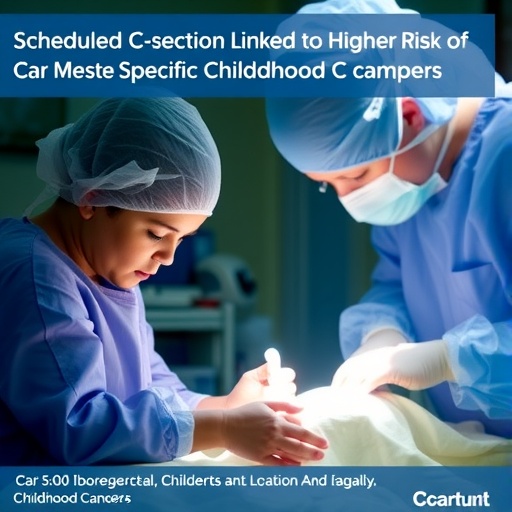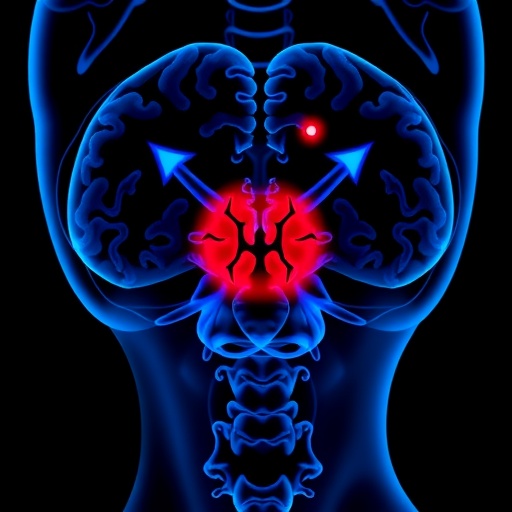The research team meticulously differentiated between planned and emergency cesarean deliveries utilizing data from the Medical Birth Register. This nuanced approach allowed for a clearer understanding of how the timing and nature of the delivery process influence long-term health outcomes in offspring. Among the cohort, 15.5% of children were delivered by cesarean, amounting to approximately 376,000 individuals. Of all children studied, 1,495 were later diagnosed with leukaemia, with those from the planned cesarean group showing a disproportionate representation. This association was most pronounced in cases of acute lymphoblastic leukaemia, the predominant form of childhood leukaemia.
.adsslot_pR7dwV2fQk{ width:728px !important; height:90px !important; }
@media (max-width:1199px) { .adsslot_pR7dwV2fQk{ width:468px !important; height:60px !important; } }
@media (max-width:767px) { .adsslot_pR7dwV2fQk{ width:320px !important; height:50px !important; } }
ADVERTISEMENT
Despite the compelling correlations, the researchers emphasize that the overall incidence of ALL remains very rare. In Sweden, between 50 and 70 new cases of B-ALL are identified annually. The excess risk attributable to planned cesarean births, as the study authors outline, equates to roughly one additional case per year nationwide—a figure underscoring the relative rarity even amidst increased risk. This nuance is critical for clinical interpretation, ensuring that prospected cesarean deliveries continue to be positioned as essential, life-saving interventions rather than practices to be unduly feared.
One of the study’s pivotal contributions lies in exploring potential biological mechanisms driving this phenomenon. The researchers hypothesize that the immunological imprinting during birth might be a crucial factor. Planned cesarean sections typically occur before the onset of natural labor, thus depriving the newborn of the stress and hormonal signals experienced during vaginal delivery or emergency C-sections initiated after labor begins. Moreover, the baby’s exposure to maternal vaginal microbiota—believed to be vital in shaping a robust neonatal immune response—is conspicuously absent in planned cesarean deliveries. This microbial exposure and associated physiological stress are theorized to prime the infant’s immune system differently, potentially altering susceptibility to conditions like ALL.
Emergency cesarean sections often unfold after labor has commenced, allowing partial exposure to the natural birth environment, including vaginal bacteria. This contrast in microbial and hormonal exposure between emergency and planned C-sections may elucidate why only the latter presents an increased ALL risk in offspring. The findings align with earlier research linking cesarean delivery, particularly planned, to heightened incidences of immune-mediated conditions such as asthma, allergies, and type 1 diabetes. Collectively, these observations highlight the broader immunological impacts of birth mode choice.
The researchers acknowledge that while some of the findings verge on statistical significance, the rarity of ALL imposes analytical challenges. Achieving robust statistical power demands immense sample sizes, which this study approaches through Sweden’s comprehensive national registers. As Christina-Evmorfia Kampitsi, the lead author and researcher at the Institute of Environmental Medicine at Karolinska Institutet, explains, the data’s closeness to significance and consistency with preceding studies lend credence to the observed association. These results, while necessitating cautious interpretation, are pivotal in progressing our understanding of ALL’s etiological factors.
Importantly, the study advocates for balanced communication around cesarean deliveries. The authors stress that medically necessary C-sections must not be discouraged, given their critical role in safeguarding maternal and neonatal health during pregnancy complications. However, the nuanced findings invite deeper discussions regarding non-medically indicated planned cesarean sections, urging healthcare providers to weigh the benefits against possible long-term immunological consequences for children.
The study stands out due to its large-scale observational cohort design, harnessing robust Swedish population health data repositories spanning more than thirty years. This methodological rigor offers unparalleled statistical power and representativeness, although observational research naturally limits causal inference. Future studies might explore molecular and immunological markers in neonates born by varying delivery modes to substantiate the mechanistic theories proposed herein.
Funding for this research was graciously provided by the Swedish Research Council and the Swedish Cancer Society, with researchers reporting no conflicts of interest. Their dedication advances a crucial frontier in understanding how prenatal and perinatal factors contribute to childhood cancer risk, promising to inform obstetric practice and public health initiatives globally.
In essence, this landmark study underscores the importance of considering the subtle yet potentially profound impacts of birth mode on immune system development and cancer susceptibility. It adds a critical piece to a complex puzzle, opening pathways for further scientific inquiry while reinforcing the indispensable life-saving status of cesarean delivery when clinically warranted.
Subject of Research: People
Article Title: Mode of delivery and the risk of lymphoblastic leukaemia during childhood – a Swedish population-based cohort study
News Publication Date: 4-Jul-2025
Web References: 10.1002/ijc.70027
References: Kampitsi CE, Mogensen H, Heyman M, Feychting M, Tettamanti G. Mode of delivery and the risk of lymphoblastic leukaemia during childhood – a Swedish population-based cohort study. International Journal of Cancer. 2025; doi:10.1002/ijc.70027.
Keywords: Childbirth, Pregnancy complications, Prenatal care, Postnatal care, Oncology, Cancer risk
Tags: acute lymphoblastic leukaemia risk factorscancer research methodology in obstetricscesarean delivery health implicationschildbirth delivery modes and health outcomeschildhood blood cancer statisticsKarolinska Institutet cancer studyleukaemia diagnosis in childrenlong-term effects of childbirth methodsobstetric care and cancer riskplanned vs emergency cesarean riskspopulation-based cohort study Swedenscheduled cesarean sections and childhood cancer





